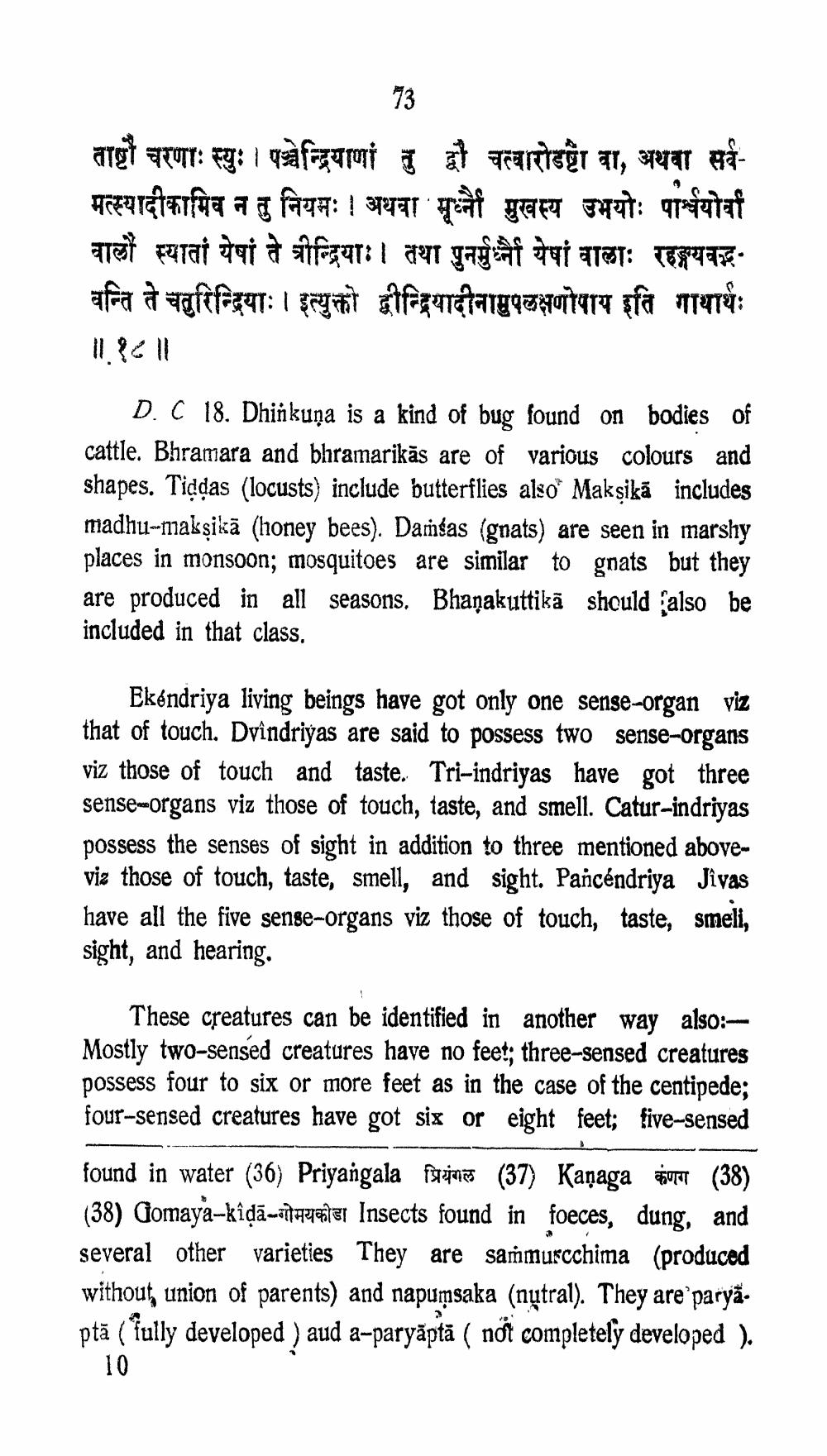________________
73
ताष्टौ चरणाः स्युः । पञ्चेन्द्रियाणां तु द्वौ चत्वारोडष्टा वा, अथवा सर्वमत्स्यादीकामिव न तु नियमः । अथवा मी मुखस्य उभयोः पार्श्वयोर्वा वालौं स्यातां येषां ते त्रीन्द्रियाः। तथा पुनर्मुनी येषां वालाः रहयवद्भवन्ति ते चतुरिन्द्रियाः । इत्युक्तो द्वीन्द्रियादीनामुपलक्षणोपाय इति गाथार्थः 11.8611
D. C 18. Dhinkuņa is a kind of bug found on bodies of cattle. Bhramara and bhramarikās are of various colours and shapes. Tigdas (locusts) include butterflies also" Maksikā includes madhu-makşikā (honey bees). Damsas (gnats) are seen in marshy places in monsoon; mosquitoes are similar to gnats but they are produced in all seasons. Bhaņakuttikā should also be included in that class.
Ekendriya living beings have got only one sense-organ viz that of touch. Dvîndriyas are said to possess two sense-organs viz those of touch and taste. Tri-indriyas have got three sense-organs viz those of touch, taste, and smell. Catur-indriyas possess the senses of sight in addition to three mentioned aboveviz those of touch, taste, smell, and sight. Pancéndriya Jivas have all the five sense-organs viz those of touch, taste, smeli, sight, and hearing.
These creatures can be identified in another way also:Mostly two-sensed creatures have no feet; three-sensed creatures possess four to six or more feet as in the case of the centipede; four-sensed creatures have got six or eight feet; five-sensed
found in water (36) Priyangala fitinas (37) Kanagar (38) (38) Gomaya-kîļā-1144pter Insects found in foeces, dung, and several other varieties They are sammurcchima (produced without, union of parents) and napumsaka (nutral). They are paryā. ptă (fully developed ) aud a-paryāptā ( not completely developed ).
10




